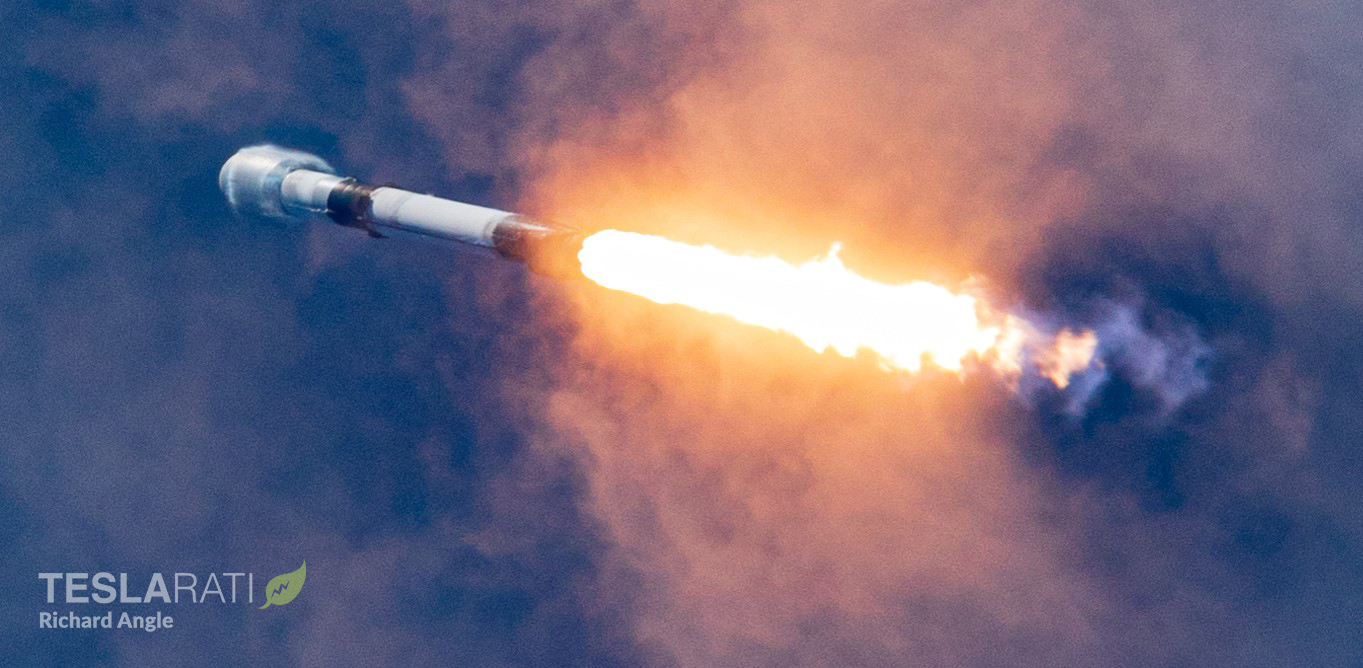
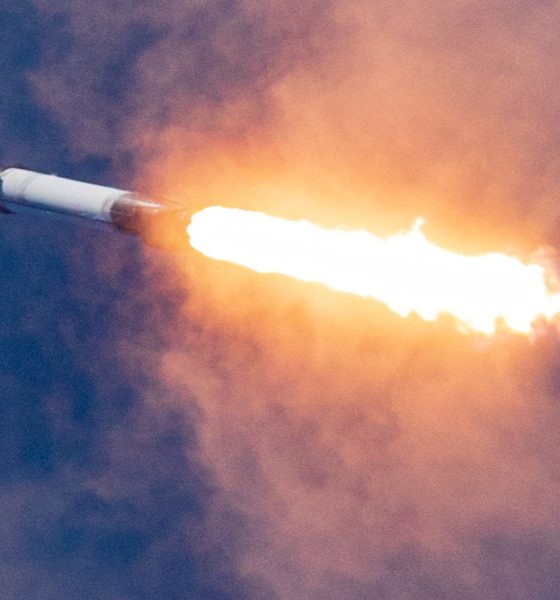
News
SpaceX’s 99th Falcon launch checks off new rocket booster reuse record [updated]
Update: Right on schedule, SpaceX Falcon 9 booster B1049 lifted off from Cape Canaveral Air Force Station Launch Complex 40 (LC-40) carrying 58 Starlink satellites and three rideshare payloads from Earth observation company Planet.
A bit less than nine minutes after liftoff, B1049 performed a bullseye landing on drone ship Of Course I Still Love You (OCISLY), becoming the first Falcon 9 booster to successfully launch and land six times. Soon after, the expendable Falcon 9 upper stage reached orbit without issue and deployed three Planet SkySats to complete SpaceX’s third Starlink rideshare mission in two months.
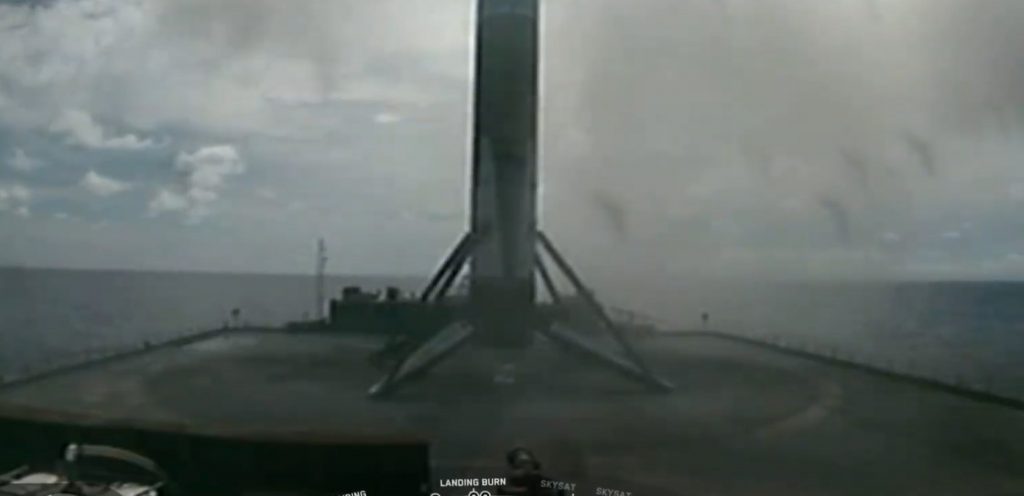
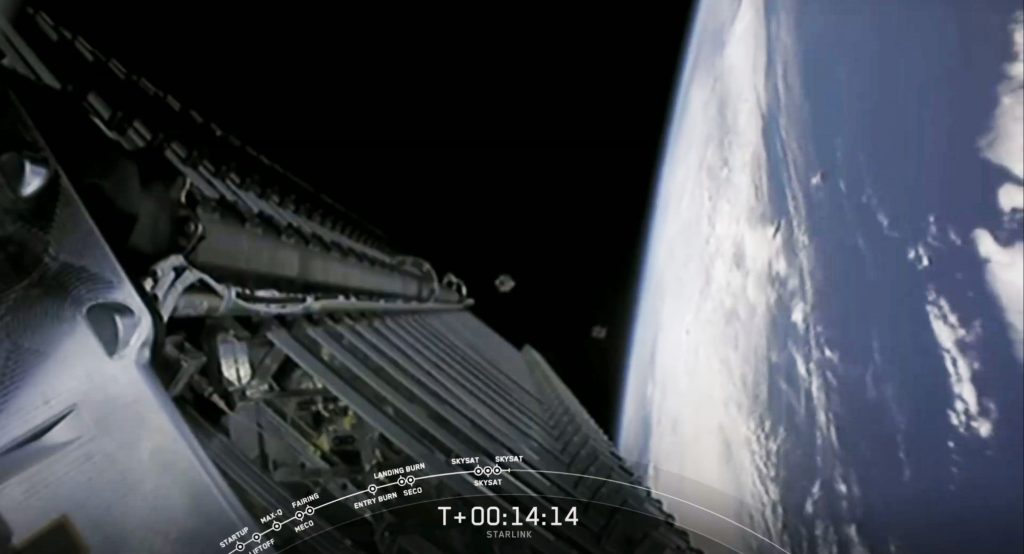
Around T+45 minutes, SpaceX revealed that recovery ship GO Ms. Tree (formerly Mr. Steven) had successfully caught a Falcon fairing half for the fifth time – also the second catch of a twice-flown fairing. Seconds later, Falcon 9 deployed all 58 Starlink v1.0 satellites, completing SpaceX’s 11th Starlink mission and leaving almost 600 operational v1.0 satellites in orbit. With this success, SpaceX is now just four launches away from beginning a public Starlink internet beta test.
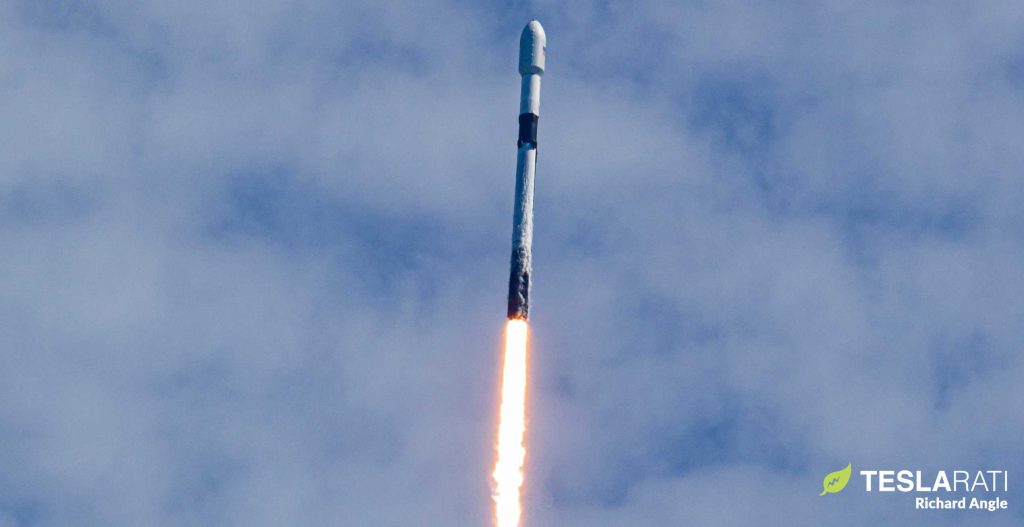
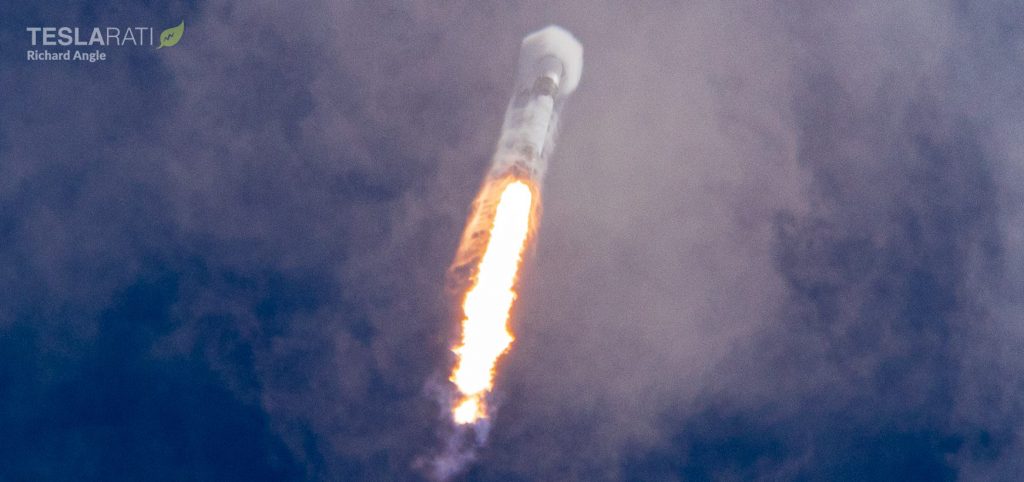
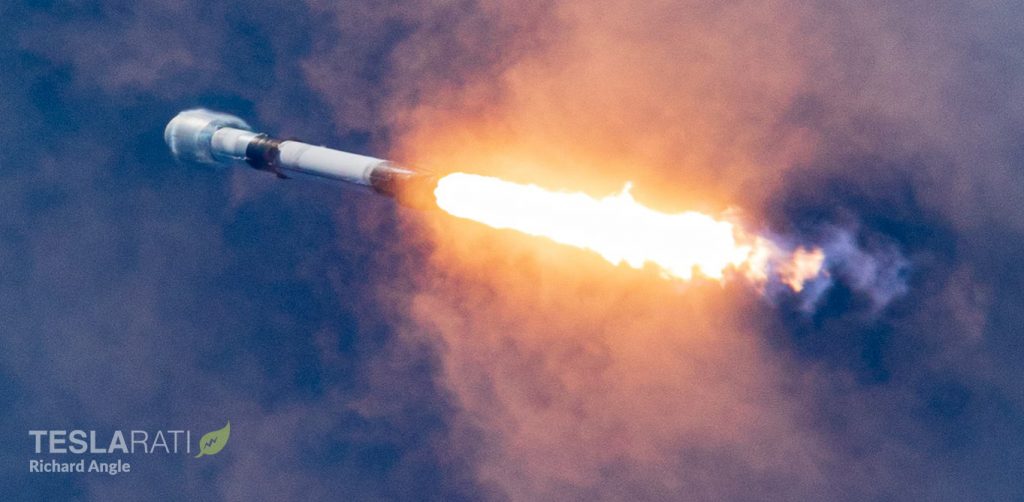
SpaceX is hours away from crossing off a major rocket reusability milestone while simultaneously attempting the 99th 100th launch of a Falcon rocket.
SpaceX’s 10th Starlink v1.0 satellite launch, 11th Starlink mission overall, and ninth Starlink launch this year is scheduled to lift off from Cape Canaveral, Florida no earlier than (NET) 10:31 am EDT (14:31 UTC) on Monday, August 18th. Carrying 58 Starlink spacecraft and three Planet SkySat Earth imaging satellites, Starlink-10 will be third mission of SpaceX’s Smallsat Rideshare Program. If the mission goes according to plan, SpaceX will end the day with some 585 operational Starlink satellites in orbit – ~69% of the way to the internet constellation’s initial operational capability (IOC).
If successful, Starlink-10 would leave SpaceX just four launches shy of one of the biggest milestones facing any satellite communications constellation.

100th launch while simultaneously launching the same Falcon 9 booster for the sixth time – a reusability first. (Richard Angle)
For Starlink, there are likely several different initial operational capability (IOC) milestones ahead of the constellation. As of July 2020, SpaceX says “hundreds” of private beta test participants – mostly SpaceX employees and their families – are already putting the nascent internet service through its paces.

More recently, the first public signs of those beta testers appeared via speed tests shared (intentionally or not) online, revealing Starlink internet speeds ranging from 10-60+ megabits per second (Mbps) and latency (ping) approaching what CEO Elon Musk said early customers should expect (20-30 ms). Already, latency alone puts Starlink internet service leagues above medium Earth orbit (MEO) and geostationary (GEO) competitors, while the speeds available to private beta testers are easily comparable to or better than existing satellite internet alternatives. Given that current beta-testers are only accessing a constellation of a few hundred satellites (of thousands planned) with user terminal prototypes, it’s safe to say that the quality of Starlink internet service can only improve.
While SpaceX is barely a tenth of the way to Starlink’s first ~4400-satellite phase, a May 2020 interview with Gwynne Shotwell revealed that the company intends to open the Starlink beta program to the public once 14 batches of satellites are safely in orbit. Based on recent FCC-SpaceX interactions, it appears that the company is excluding v0.9 satellite prototypes from the operational count, implying that said public beta can begin to roll out once the Starlink V1 L14 (Starlink-14) launch is complete and the satellite batch has boosted into its final orbit.
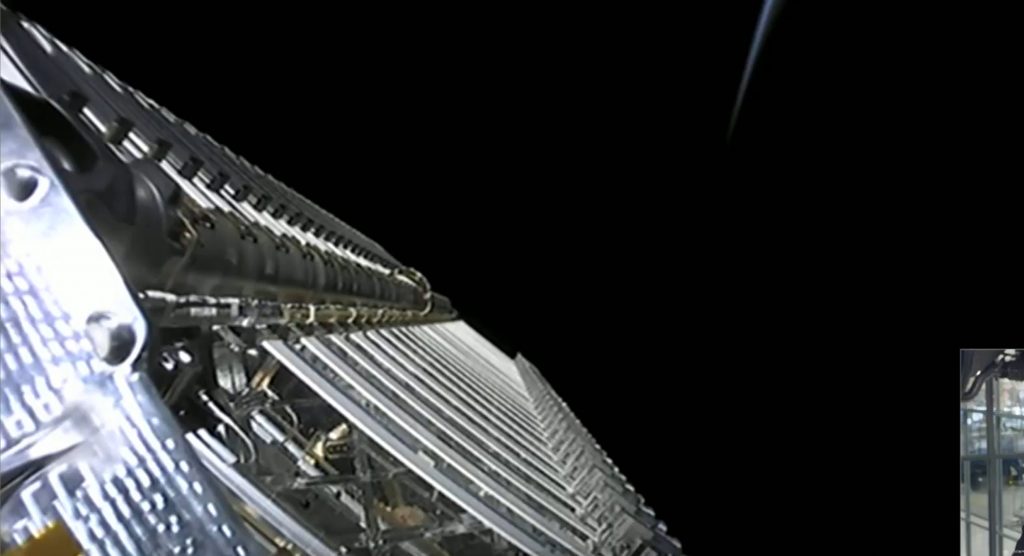
Main purpose aside, the Starlink-10 mission will also mark several major rocket milestones for SpaceX. Regardless of the outcome, the company will be just one launch shy from cresting the triple-digit
mark, reaching 100 Falcon 1, Falcon 9, and Falcon Heavy launch attempts since its 2005 launch debut. The mission will also be Falcon 9’s 92nd launch and – if successful – 91st success. Based on SpaceX’s activity in the last eight months, the company could feasibly complete another 7-9 launches, of which 4-5 would likely be Starlink missions.
To economically launch so many Starlink missions, SpaceX has dug deep into the reusability of its Falcon 9 rockets. In April, Falcon 9 B1048 became the first booster to launch five times, although an engine failure prevented a landing attempt. In June and August, another two Falcon 9 boosters successfully launched and landed for the fifth time. Now, Falcon 9 B1049 – the first SpaceX rocket to successfully launch and land five times – is set to become the first to launch (and hopefully land) six times with Starlink-10. If the schedule holds and Starlink-10 goes according to plan, SpaceX will have set two consecutive booster reuse records less than three months (75 days) apart.
Tune in at the link below to watch SpaceX’s Starlink-10 launch and landing live.
Check out Teslarati’s Marketplace! We offer Tesla accessories, including for the Tesla Cybertruck and Tesla Model 3.

Investor's Corner
SpaceX IPO is coming, CEO Elon Musk confirms
However, it appears Musk is ready for SpaceX to go public, as Ars Technica Senior Space Editor Eric Berger wrote an op-ed that indicated he thought SpaceX would go public soon. Musk replied, basically confirming it.

Elon Musk confirmed through a post on X that a SpaceX initial public offering (IPO) is on the way after hinting at it several times earlier this year.
It also comes one day after Bloomberg reported that SpaceX was aiming for a valuation of $1.5 trillion, adding that it wanted to raise $30 billion.
Musk has been transparent for most of the year that he wanted to try to figure out a way to get Tesla shareholders to invest in SpaceX, giving them access to the stock.
He has also recognized the issues of having a public stock, like litigation exposure, quarterly reporting pressures, and other inconveniences.
However, it appears Musk is ready for SpaceX to go public, as Ars Technica Senior Space Editor Eric Berger wrote an op-ed that indicated he thought SpaceX would go public soon.
Musk replied, basically confirming it:
As usual, Eric is accurate
— Elon Musk (@elonmusk) December 10, 2025
Berger believes the IPO would help support the need for $30 billion or more in capital needed to fund AI integration projects, such as space-based data centers and lunar satellite factories. Musk confirmed recently that SpaceX “will be doing” data centers in orbit.
AI appears to be a “key part” of SpaceX getting to Musk, Berger also wrote. When writing about whether or not Optimus is a viable project and product for the company, he says that none of that matters. Musk thinks it is, and that’s all that matters.
It seems like Musk has certainly mulled something this big for a very long time, and the idea of taking SpaceX public is not just likely; it is necessary for the company to get to Mars.
The details of when SpaceX will finally hit that public status are not known. Many of the reports that came out over the past few days indicate it would happen in 2026, so sooner rather than later.
But there are a lot of things on Musk’s plate early next year, especially with Cybercab production, the potential launch of Unsupervised Full Self-Driving, and the Roadster unveiling, all planned for Q1.
News
Tesla adds 15th automaker to Supercharger access in 2025
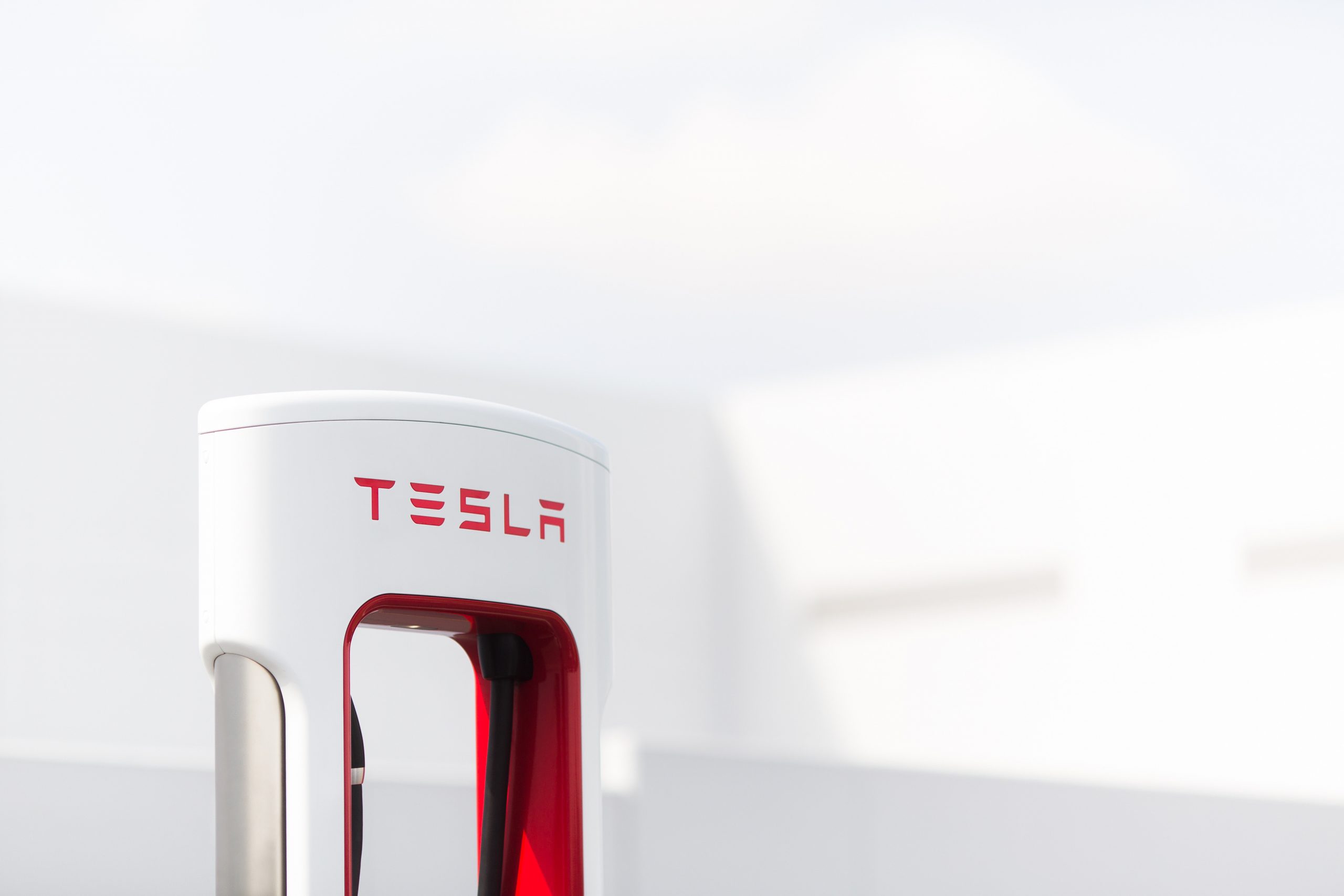
Tesla has added the 15th automaker to the growing list of companies whose EVs can utilize the Supercharger Network this year, as BMW is the latest company to gain access to the largest charging infrastructure in the world.
BMW became the 15th company in 2025 to gain Tesla Supercharger access, after the company confirmed to its EV owners that they could use any of the more than 25,000 Supercharging stalls in North America.
Welcome @BMW owners.
Download the Tesla app to charge → https://t.co/vnu0NHA7Ab
— Tesla Charging (@TeslaCharging) December 10, 2025
Newer BMW all-electric cars, like the i4, i5, i7, and iX, are able to utilize Tesla’s V3 and V4 Superchargers. These are the exact model years, via the BMW Blog:
- i4: 2022-2026 model years
- i5: 2024-2025 model years
- 2026 i5 (eDrive40 and xDrive40) after software update in Spring 2026
- i7: 2023-2026 model years
- iX: 2022-2025 model years
- 2026 iX (all versions) after software update in Spring 2026
With the expansion of the companies that gained access in 2025 to the Tesla Supercharger Network, a vast majority of non-Tesla EVs are able to use the charging stalls to gain range in their cars.
So far in 2025, Tesla has enabled Supercharger access to:
- Audi
- BMW
- Genesis
- Honda
- Hyundai
- Jaguar Land Rover
- Kia
- Lucid
- Mercedes-Benz
- Nissan
- Polestar
- Subaru
- Toyota
- Volkswagen
- Volvo
Drivers with BMW EVs who wish to charge at Tesla Superchargers must use an NACS-to-CCS1 adapter. In Q2 2026, BMW plans to release its official adapter, but there are third-party options available in the meantime.
They will also have to use the Tesla App to enable Supercharging access to determine rates and availability. It is a relatively seamless process.
News
Tesla adds new feature that will be great for crowded parking situations
This is the most recent iteration of the app and was priming owners for the slowly-released Holiday Update.
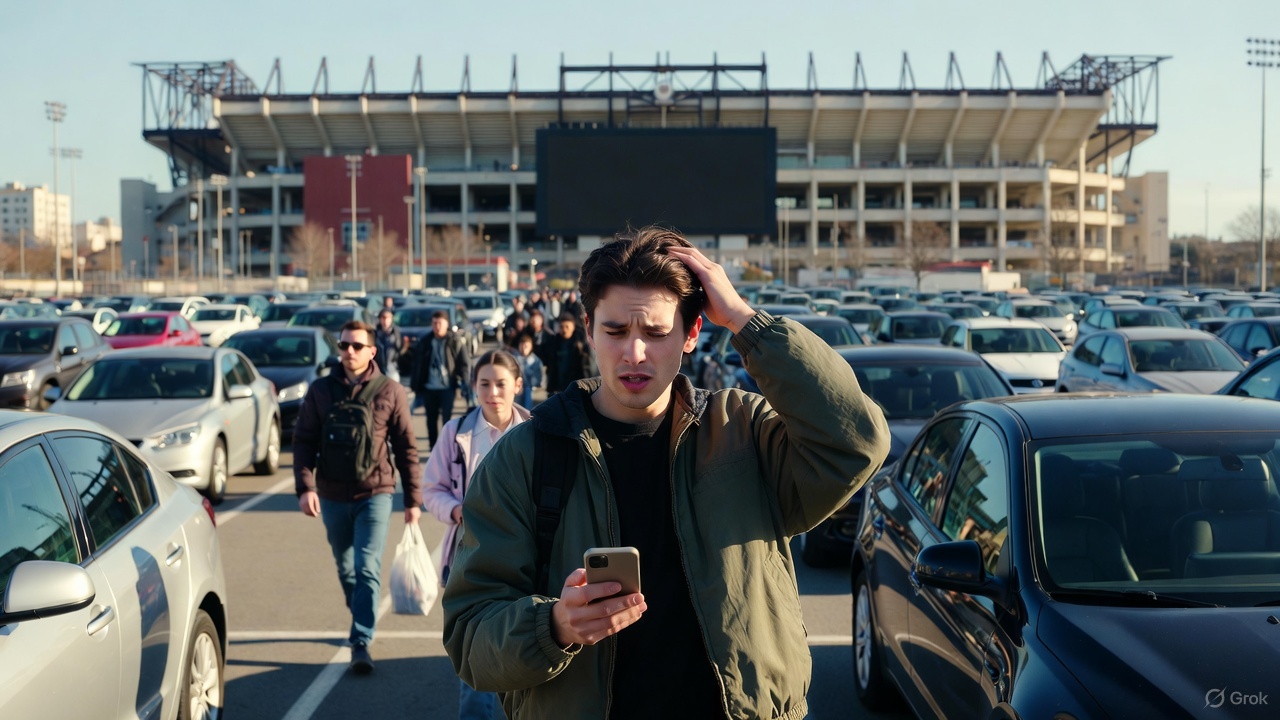
Tesla has added a new feature that will be great for crowded parking lots, congested parking garages, or other confusing times when you cannot seem to pinpoint where your car went.
Tesla has added a new Vehicle Locator feature to the Tesla App with App Update v4.51.5.
This is the most recent iteration of the app and was priming owners for the slowly-released Holiday Update.
While there are several new features, which we will reveal later in this article, perhaps one of the coolest is that of the Vehicle Locator, which will now point you in the direction of your car using a directional arrow on the home screen. This is similar to what Apple uses to find devices:
Interesting. The location arrow in the Tesla app now points to your car when you’re nearby. pic.twitter.com/b0yjmwwzxN
— Whole Mars Catalog (@wholemars) December 7, 2025
In real time, the arrow gives an accurate depiction of which direction you should walk in to find your car. This seems extremely helpful in large parking lots or unfamiliar shopping centers.
Getting to your car after a sporting event is an event all in itself; this feature will undoubtedly help with it:
The nice little touch that Tesla have put in the app – continuous tracking of your vehicle location relative to you.
There’s people reporting dizziness testing this.
To those I say… try spinning your phone instead. 😉 pic.twitter.com/BAYmJ3mzzD
— Some UK Tesla Guy (UnSupervised…) (@SomeUKTeslaGuy) December 8, 2025
Tesla’s previous app versions revealed the address at which you could locate your car, which was great if you parked on the street in a city setting. It was also possible to use the map within the app to locate your car.
However, this new feature gives a more definitive location for your car and helps with the navigation to it, instead of potentially walking randomly.
It also reveals the distance you are from your car, which is a big plus.
Along with this new addition, Tesla added Photobooth features, Dog Mode Live Activity, Custom Wraps and Tints for Colorizer, and Dashcam Clip details.
🚨 Tesla App v4.51.5 looks to be preparing for the Holiday Update pic.twitter.com/ztts8poV82
— TESLARATI (@Teslarati) December 8, 2025
All in all, this App update was pretty robust.








